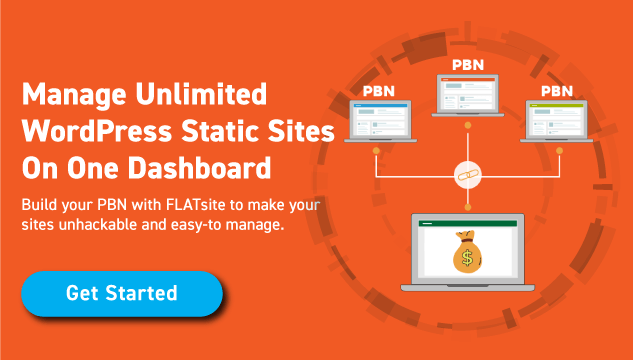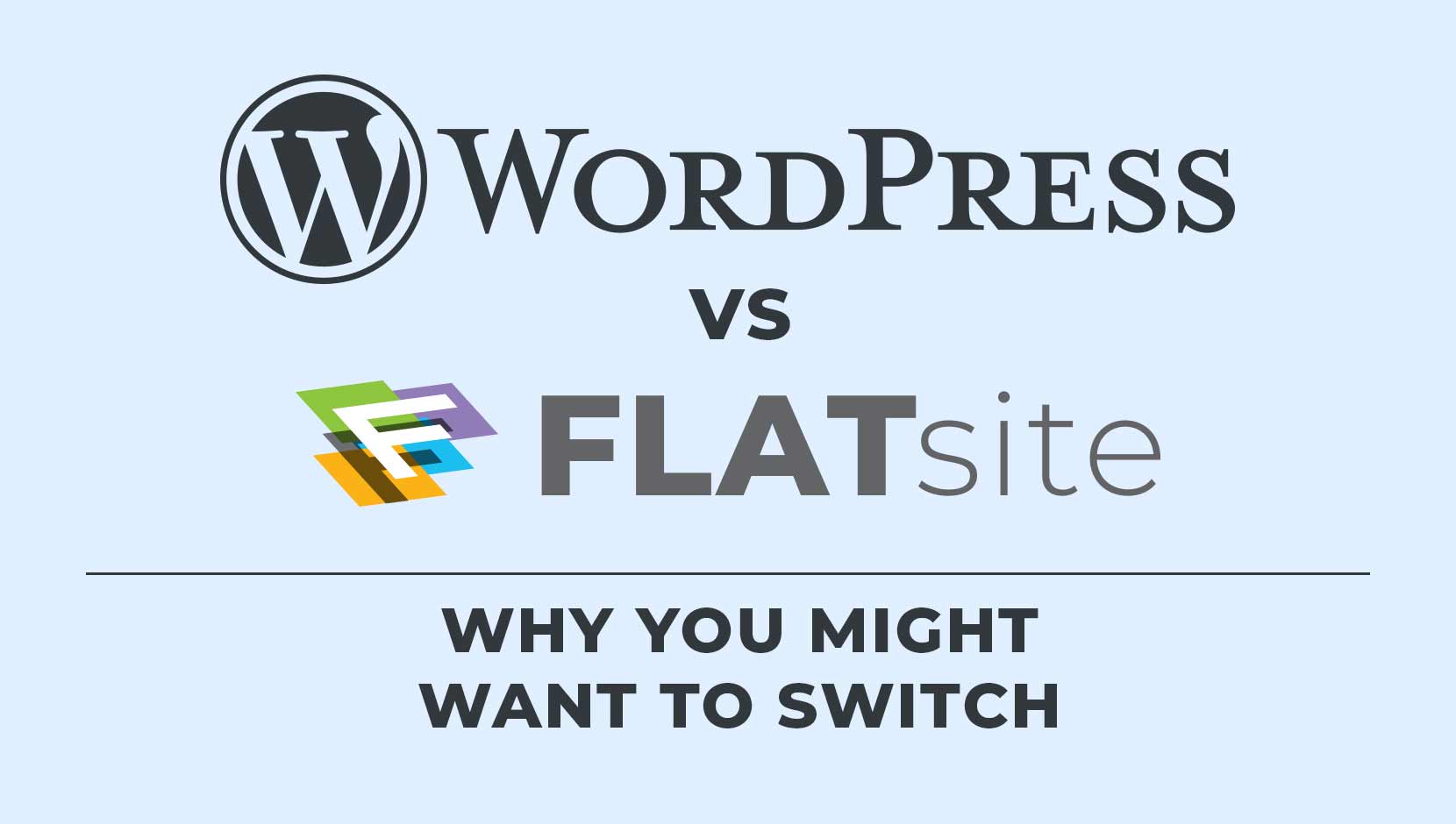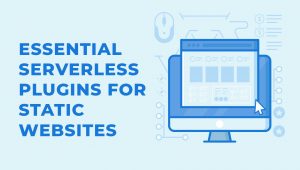WordPress is great for beginners who want to create a gorgeous website without paying through the nose for a web developer. It’s easy to use, endlessly customizable, and so versatile that it can power top-secret government websites as well as your grandma’s knitting blog. But when we compare WordPress vs FLATsite in terms of speed, security, and hosting costs, it’s pretty clear which platform comes out on top.
In fact, with FLATsite, you can get all these benefits without even having to give up your beloved WordPress! (Can anyone else hear Hannah Montana’s “Best of Both Worlds”?)
Don’t worry. We’ll explain.
So, what is FLATsite?

FLATsite is a static site generator for WordPress, which means you can use it to turn a dynamic WordPress website into a static one. If reading that didn’t make you weep with relief and hit the Checkout button, it’s probably because “dynamic website” and “static website” might as well be Greek to you. The truth is you’ve probably used both kinds of website without knowing what they are.
A dynamic website is the kind of website you create when you use WordPress.
Its webpages can change from minute to minute depending on the user, the time of day, and even the language you’re most comfortable speaking. A static website stays the same until it’s updated from the backend. With FLATsite, you can turn a dynamic website into a static one.
But why would you want to do that? Well, because of these common problems with dynamic WordPress sites:
1. They sometimes load too slowly.
The thing about dynamic websites is that they all have a database. This means that every time a visitor requests a webpage, the website essentially creates the page from scratch. If your webpage has lots of elements that each pull on your server’s resources, your website could take ages to load.
2. They can be expensive to host.
Because of all the behind-the-scenes work a server has to do to load just one page on a dynamic website, if your site has hundreds of webpages, or if you’re hosting multiple WordPress websites, your hosting costs can quickly add up. This makes WordPress sites notoriously expensive to host, which is part of the reason why so many hosting companies offer special plans for people who run WordPress websites.
3. They’re vulnerable to hacking.
WordPress powers most of the websites on the internet, which is no small feat, since there are more than one billion websites in existence. But because WordPress has such a massive userbase and because the website’s databases are a weak point, WordPress is a prime target for hackers. If you forget to update your WordPress website, you’ll leave it wide open to cyberattacks.
WordPress vs FLATsite
1. FLATsite is faster than WordPress alone.
FLATsite stores WordPress webpages as a flat HTML document, which means it never needs to build a page from scratch when a visitor requests it. It simply retrieves the webpage and immediately presents it to the visitor. This makes FLATsite ultra-fast! In fact, in a recent speed comparison test, FLATsite topped the competition!
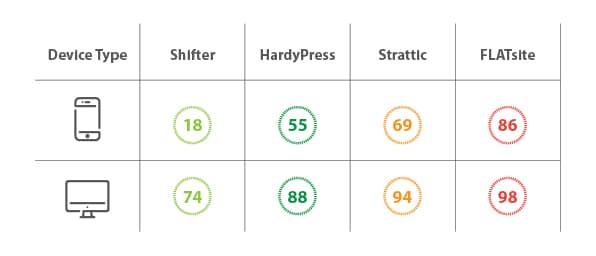
2. FLATsite is cheaper to host.
Static websites have no database, so any website you create using FLATsite will be light as a feather. This means it will take up way less space on a server, so it will be cheaper to host. This is especially great news if you have a PBN and need to create hundreds of websites that funnel visitors to your money site.
3. FLATsite is more secure.

FLATsite is a fortress because it can’t be changed on the user end and it doesn’t have a database. This means that SQL injections – a common tool of hackers – are powerless against a static website. And users can’t inject malicious code into your website unless you give them access to your backend. When we compare WordPress vs FLATsite, it’s plain to see which platform is more secure.
4. FLATsite requires less maintenance.
FLATsite automatically updates WordPress and Plugins, which means you don’t have to pay pesky maintenance fees to your hosting company. WordPress requires painstaking maintenance if you want to have a secure website, so those maintenance costs skyrocket if you’re not using FLATsite.
5. FLATsite has a single-login dashboard.
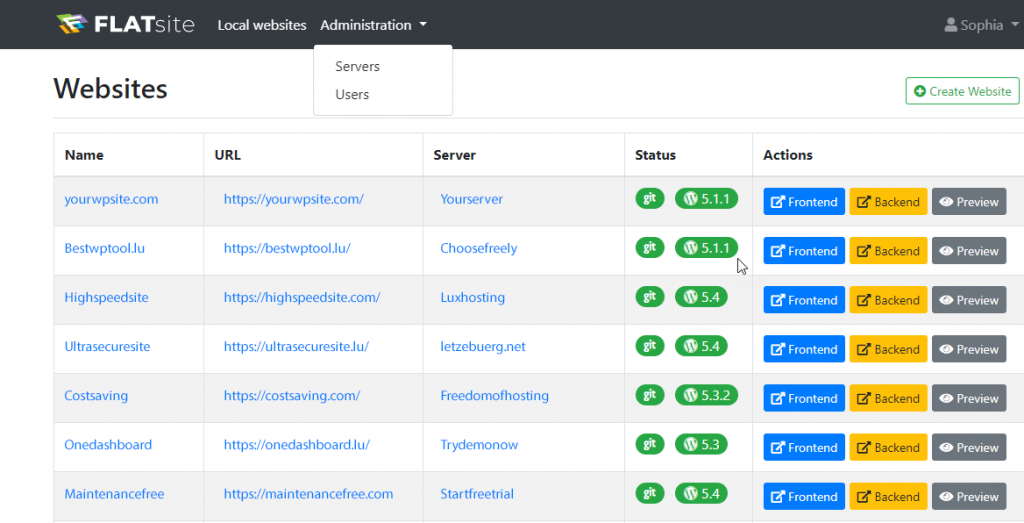
With FLATsite, you can install WordPress right on your FLATsite server, where you can develop websites from a single dashboard. You can navigate to the backend, the live site, and the staging environment right from this dashboard! Want to deploy or export websites? No need to log in to another area. You’ll have access to everything you need to run multiple websites all from a single dashboard.
6. FLATsite was designed with teams in mind.
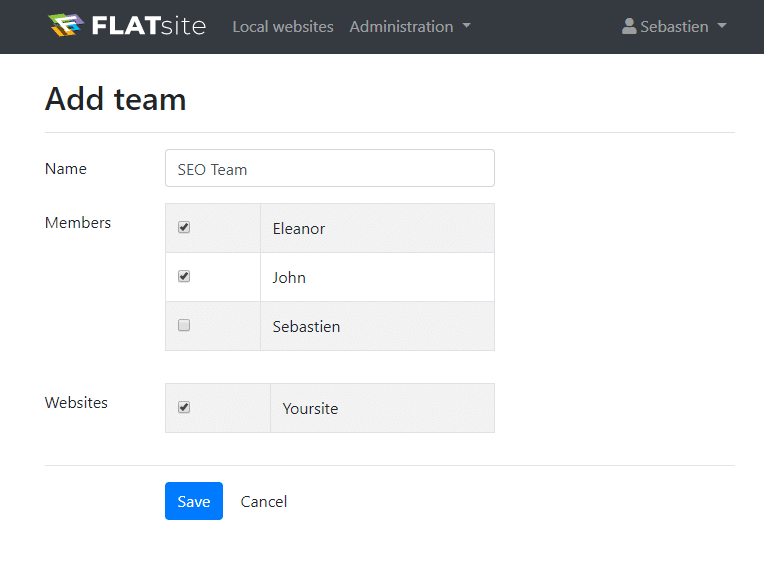
FLATsite’s engine was created for seamless collaboration. The Admin creates the users and sets rules for what they can and can’t do. With FLATsite, teams get work done faster. And even your least technologically skilled team members will be able to use FLATsite’s simple interface in a flash!
7. FLATsite is compatible with WordPress.
Remember how we said that when you use FLATsite, you don’t have to choose between WordPress vs FLATsite? That’s because FLATsite uses WordPress in the back office but deploys your website to your visitors as a static WordPress website. So, you get to keep using WordPress without any of the slow loading, security risks, or expensive hosting!
Not bad for a simple static site generator.
Wrapping up
FLATsite is the best-kept secret among website owners who want fast, secure websites that are also cheap to host. If you want to start expanding your website, check out our criminally affordable packages so you can find the one that’s perfect for your brand!
